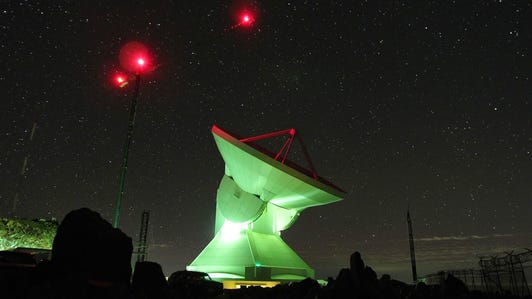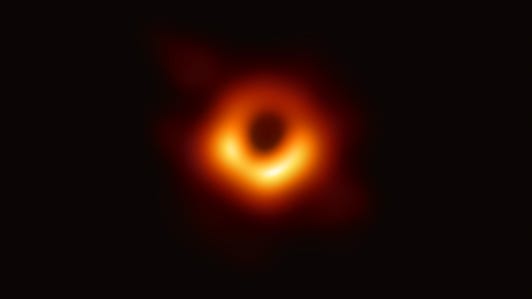Closest Black Hole to Earth Is Not a Black Hole at All. It’s a Vampire Star System. – CNET [CNET]

Just over 1,000 light-years from Earth lies a cosmic puzzle. It’s known as HR 6819. In the 1980s, scientists thought HR 6819 was just one star, dimly glowing in our night sky and visible to the naked eye. But in 2020 astronomers, studying the system with a powerful telescope, put forward a new hypothesis: HR 6819 is actually a triple system, containing two stars and a black hole.
It was a surprising and momentous find because it would mean astronomers had found the closest black hole to Earth yet. But other scientists weren’t as convinced by the hypothesis. A flurry of papers suggested there may be alternate explanations for HR 6819 — explanations that didn’t require a black hole.
The 2020 study used a Chilean microscope to study light from two stars in HR 6819. One star appeared to be orbiting an invisible object with a mass about four times that of the sun. Lead author, Thomas Rivinius, an astronomer with the European Southern Observatory, concluded at the time it “can only be a black hole.”
New data, collected by Rivinius and a team of astronomers from KU Leuven in Belgium, paints a different picture. The data, published in the journal Astronomy & Astrophysics on March 2, suggests HR 6819 is a “vampire” two-star system.
What We Do in the Shadows
Black holes are incredibly dense cosmic objects with immense gravitational pull and they’re totally invisible to us. Light that goes into a black hole cannot escape — the gravity is too strong. In Rivinius’ 2020 paper, the team suggested a star was orbiting a black hole every 40 days, but another team looked at HR 6819 and authored another study providing an alternative explanation.
That study was led by Julia Bodensteiner at KU Leuven and promoted the idea that the system does have a star on a 40 day orbit, but it’s orbiting another star, not a black hole. The close proximity of the two stars sees one star drain the mass of the other — an act of stellar vampirism.
To find out exactly what was going on in HR 6819, the teams with competing hypotheses paired up and used the European Southern Observatory’s Very Large Telescope and its interferometer to probe the system for answers. “The scenarios we were looking for were rather clear, very different and easily distinguishable with the right instrument,” said Rivinius, in a press release.
The team were able to rule out the existence of a black hole by looking for the existence of the companion star, expected to be on a wide orbit. They couldn’t find it. That meant that HR 6819 was not home to a triple system with two stars and a black hole. It was just a two star system.

The red line in the image denotes the supposed position of a black hole. New data has shown the star on the right hand side of this image has a much tighter orbit — and there is no black hole in the system.
ESO/L. CalçadaWhat had thrown scientists was the fact they’d caught HR 6819 at a really exciting time in its life — just after the act of stellar vampirism had taken place.
“Catching such a post-interaction phase is extremely difficult as it is so short,” said Abigail Frost, an astronomer at KU Leuven who led the new study.
“This makes our findings for HR 6819 very exciting, as it presents a perfect candidate to study how this vampirism affects the evolution of massive stars, and in turn the formation of their associated phenomena including gravitational waves and violent supernova explosions.”
The cosmic mystery is solved but that means the record for Earth’s closest black hole has been vacated. There is, however, a prime contender for the title. In April 2021, astronomers discovered a “unicorn” black hole hiding in the shadow of red giant star V723 Mon. That black hole lies about 1,500 light-years away from Earth and is one of the smallest black holes ever seen. The next closest, A0620-00, lies about 3000 light-years away.

![closest-black-hole-to-earth-is-not-a-black-hole-at-all-it’s-a-vampire-star-system.-–-cnet-[cnet]](https://i0.wp.com/upmytech.com/wp-content/uploads/2022/03/52816-closest-black-hole-to-earth-is-not-a-black-hole-at-all-its-a-vampire-star-system-cnet-cnet.jpg?resize=800%2C445&ssl=1)



![wasteland-3-review-in-progress-—-colder,-but-more-intimate-[venturebeat]](https://i0.wp.com/upmytech.com/wp-content/uploads/2020/09/9252/wasteland-3-review-in-progress-colder-but-more-intimate-venturebeat.png?resize=390%2C205&ssl=1)
![google-introduces-advanced-ai-capabilities-to-advertisers-through-gemini-integration-[readwrite]](https://i0.wp.com/upmytech.com/wp-content/uploads/2024/02/169691-google-introduces-advanced-ai-capabilities-to-advertisers-through-gemini-integration-readwrite.webp?resize=390%2C205&ssl=1)
![6-best-natural-sugar-alternatives-–-cnet-[cnet]](https://i0.wp.com/upmytech.com/wp-content/uploads/2023/04/118584-6-best-natural-sugar-alternatives-cnet-cnet.jpg?resize=300%2C200&ssl=1)